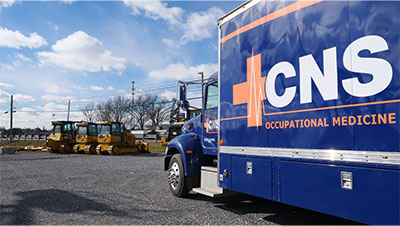FDA recommends marijuana be decriminalized by lowering it to a Schedule III drug due to overwhelming evidence not finding serious risk.
The federal government has been pushing Congress for years to decriminalize marijuana. This was most relevant with the MORE Act in 2022.
On October 6, 2022, President Biden released a statement asking the Secretary of the Department of Health and Human Services (HHS) and the Attorney General “to initiate the administrative process to review expeditiously how marijuana is scheduled under federal law.”
They considered eight factors in a scientific and medical evaluation:
- Its actual or relative potential for abuse;
- Scientific evidence of its pharmacological effect, if known;
- The state of current scientific knowledge regarding the drug or other substance;
- Its history and current pattern of abuse;
- The scope, duration, and significance of abuse;
- What, if any, risk there is to the public health
- Its psychic or physiological dependence liability; and
- Whether the substance is an immediate precursor of a substance already controlled.
So, what did they find?
Where does FDA want to reclassify Marijuana?
“Upon consideration of the eight factors determinative of control of a substance under 21 U.S.C.811(c), the FDA recommends that marijuana be placed in Schedule III of the CSA. The National Institute on Drug Abuse has reviewed the enclosed documents and concurs with FDA’s recommendation. Marijuana meets the findings for control in Schedule III set forth in 21 U.S.C. 812(b)(3).”
Schedule III drugs are classified as having a potential for abuse less than the drugs or other substances in schedules I and II, a currently accepted medical use in treatment in the United States, and moderate or low physical dependence or high psychological dependence that may result from their use.
Related articles:
- California Employers Can ONLY Drug Test Employees for Marijuana For Recent Use
- Delaware Becomes Latest State to Legalize Recreational Marijuana
What did they find in reviewing available research and health data?
To answer this, let’s look at the main scientific and medical evaluation factors they considered and see what they found.
Its actual or relative potential for abuse:
Evidence shows that some individuals are taking marijuana in amounts sufficient to create a hazard to their health and to the safety of other individuals and the community.
However, evidence also exists showing that the vast majority of individuals who use marijuana are doing so in a manner that does not lead to dangerous outcomes to themselves or others.
In conclusion, they found that from data involving marijuana or comparator drugs that are used nonmedically, occurring over 2015 to 2021, the utilization-adjusted rate of adverse outcomes involving marijuana was consistently lower than the respective utilization-adjusted rates of adverse outcomes involving heroin, cocaine, and, for certain outcomes, other comparators.
For overdose deaths, marijuana is always in the lowest ranking among comparator drugs.
The state of current scientific knowledge regarding the drug or other substance:
The available data indicate that there is some credible scientific support for the use of marijuana in the treatment of pain, anorexia related to a medical condition, and nausea and vomiting, with varying degrees of support and consistency of findings.
Additionally, no safety concerns were identified in our review that would indicate that medical use of marijuana poses unacceptably high safety risks for the indications where there is some credible scientific evidence supporting its therapeutic use.
Its history and current pattern of abuse:
Since 1970 when the CSA was passed, marijuana use has vacillated over time. As stated inthe2017 NASEM report The Health Effects of Cannabis and Cannabinoids: The Current State of Evidence and Recommendations for Research:
- The prevalence of cannabis use peaked in the late 1970s, when more than one-third of high school seniors (37 percent in 1976) and one in eight Americans over 12 years old(12.8 percent in 1979) reported past-month use (Johnston et al., 2016).
- The mid-1990s saw rapid increases, with use by high school seniors nearly doubling within just the 5 years from 1992 (11.9 percent) to1997 (23.7 percent).
- Throughout the late 1990s and early 2000s, the rates of use largely stagnated, with trends among youth and the general population moving roughly in parallel(Johnston et al., 2016).
- The years since 2007 have seen steady year-over-year increases in general population past-month use, rising from 5.8 percent to 8.4 percent in 2014(a 45 percent increase).
- Based on NSDUH data, from 2015 to 2019 the past-year use of marijuana for any reason (nonmedical and medical) among people ages 12 years and older increased from 14 to 18%.
This is in contrast to past-year use (nonmedical and medical) of comparator drugs that have FDA-approved therapeutic indications, where use declined or remained relatively stable over the same timeframe, including:
- hydrocodone (22 to 16%),
- benzodiazepines (12 to 11%, 2017 to 2019 only),
- oxycodone (11 to 9%),
- tramadol (7 to 6%),
- zolpidem (4 to 3%), and
- ketamine (less than1%).
The decline for hydrocodone was the largest for any comparator drug (~6%), and by 2019, the prevalence of any past-year use of marijuana exceeded that of hydrocodone (18% vs. 16%, respectively).
These data show that use of marijuana for medical and nonmedical purposes is extensive in the United States, but that its prevalence of use is less than that of alcohol.
The scope, duration, and significance of abuse:
The most notable conclusion from an evaluation of various epidemiological databases related to the medical outcomes from abuse of selected drugs is that for all measures that were evaluated from 2015 to 2020, the rank order of the comparators in terms of greatest adverse consequence typically places alcohol, heroin, and/or cocaine in the first or immediately subsequent positions, with marijuana in a lower place in the ranking.
This pattern was also observed for PC data with regard to serious medical outcomes, including death, where marijuana was in the lowest ranking group.
This demonstrates that there is consistency across databases, across substances, and overtime, and although abuse of marijuana produces clear evidence of harmful consequences, including substance use disorder, they are relatively less common and less harmful than some other comparator drugs.
Additionally, the number of law enforcement encounters with marijuana decreased from 2020 to 2021, at a time when law enforcement encounters were increasing for other scheduled drugs of abuse.
What, if any, risk there is to the public health:
NSDUH data from 2021 were examined to evaluate the prevalence of reported driving under the influence of marijuana, alcohol, cocaine, or heroin over the past year in individuals ages 16 years and older.
- When the NSDUH data are evaluated by age cohorts, the highest prevalence for driving under the influence of marijuana was in individuals who were age 21 to 25 (10%), followed by individuals aged 26-34 (7%), aged 16 to 20 (6%), aged 35 to 64 (3%) and aged 65 and older(1%).
FAERS is a database that contains adverse event reports, medication error reports, and product quality complaints submitted to FDA and is designed to support FDA’s postmarket safety surveillance program for drug and therapeutic biological products.
- Of 133 marijuana cases in FAERS and CAERS, 92 had one or more serious outcomes, including: hospitalization (n=54), life-threatening (n=28), required medical intervention (n=21), disability(n=15), or other serious outcome (n=35); in addition to the 54 hospitalizations, 17 cases described an ED visit.
Their conclusion was that the risks to the public health posed by marijuana are low compared to other drugs of abuse (e.g. heroin, cocaine, benzodiazepines). The rank order of the comparators in terms of greatest adverse consequences typically places heroin, benzodiazepines and/or cocaine in the first or immediately subsequent positions, with marijuana in a lower place in the ranking, especially when a utilization adjustment is calculated.
For overdose deaths, marijuana is always in the lowest rankings among comparator drugs.
Whether the substance is an immediate precursor of a substance already controlled:
This is the most important question as it tries to answer if marijuana is a gateway drug to more harmful drugs.
Based on all the previous data, they found that marijuana is not an immediate precursor of another controlled substance.
If reclassified, what should employers do to prepare?
It is important to note that even if marijuana is reclassified, it is unlikely that federally regulated safety-sensitive workers, such as truck drivers, would be allowed to begin using it either recreationally or medically.
This is why as employers, the risks of cannabis in the workplace should not be tolerated for safety-sensitive employees.
The biggest flaw with any legalization effort is how to gauge weekend recreational use and differentiate it from an addicted/abusive employee who is impaired.
If your business is not federally regulated, you can set up a policy however you feel comfortable, such as:
- only performing pre-employment drug testing
- only performing post-accident drug testing
- only targeting safety-sensitive roles for pre-employment, post-accident, and random drug testing
Just make sure you understand and follow local, state and Federal laws surrounding drug testing. For example, some states do not allow termination of employment for the first offense when tested positive for any drug.
We also recommend adding or requiring oral saliva drug tests.
Oral saliva testing is a quick, shorter detection window of a few hours to a few days, harder to cheat, and does not have sensitivity issues like urine testing. It is especially suited for reasonable suspicion and post-accident testing since you want to know if drugs may have played a factor in recent events, like a vehicle accident or workplace injury.
Finally, be open with your employees by providing educational materials on how marijuana affects the body and the risks of impairment at work and update your managers on reasonable suspicion training.
Get help with customized workplace health policy development
Workplace health and drug testing policies can be complicated to implement and change across your company.
For example, your drug testing policy should consider:
- Purpose of the Policy
- Specimen Types
- Testing Procedures
- Prescription Drug Disclosure
- Federal Regulations (DOT)
- State Drug Testing Laws and Marijuana Laws
- Workers’ Compensation
- ADA
- Prohibited Conduct
- Consequences
Our Occupational Medicine Team can develop a custom workplace safety plan for your company that combines services like physicals, drug testing, audiograms, respiratory fit testing, and more.
For more information, contact us at 800.551.9816 or info@cnsoccmed.com.










